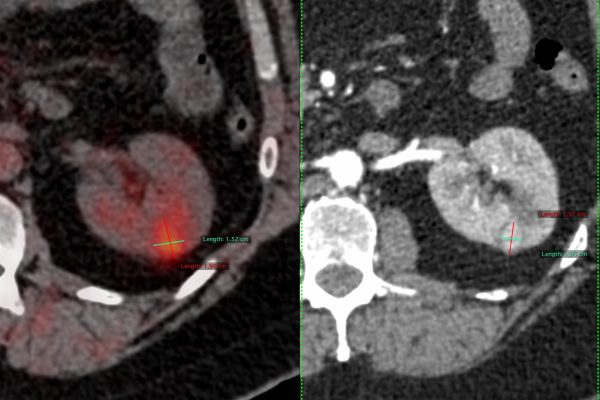Precision in Practice: Understanding the Procedure of Radiofrequency Ablation
Precision medicine has become a cornerstone in the treatment of various medical conditions, and when it comes to the management of certain tumours, Radiofrequency Ablation (RFA) stands out as a precise and minimally invasive option. This innovative technique is particularly effective in treating osteoid osteoma, osteoblastoma, and chondroblastoma, as well as tumours in vital organs like the liver and lungs.
What is Radiofrequency Ablation (RFA)?
Radiofrequency Ablation (RFA) is an innovative medical procedure that uses quick electric pulses to accurately get rid of tumours. Its key strength lies in its ability to selectively target and destroy abnormal tissues while sparing healthy ones.
RFA is a minor procedure, often requiring small incisions or a thin needle-like electrode, leading to quicker recovery times compared to traditional surgeries.This approach makes RFA accessible to a wider range of patients.
RFA works wonders not just for bone tumours, but important organs such as the liver and lungs too. It’s a key part of precision medicine. Its precision and flexibility make it a promising option for patients seeking targeted, minimally disruptive treatments.As technology evolves, RFA keeps playing a big role in changing medical innovation. It offers hope for better results and better lives for patients fighting tough conditions.
Precision in Treating Bone tumours
Osteoid Osteoma
Osteoid osteoma is a benign bone tumour that commonly affects the long bones of the body. RFA offers a precise solution by using radio waves to melt the tumours while sparing the surrounding healthy bone tissue. This method reduces the risk of complications and promotes faster recovery.
Osteoblastoma
Like osteoid osteoma, osteoblastoma is a bone tumour. It predominantly impacts the spine and long bones. RFA, or Radiofrequency Ablation, is good at treating osteoblastomas. It uses a precise and controlled method to get rid of the tumour. This eases symptoms and enhances the patient’s life quality.
Chondroblastoma
Chondroblastoma, an uncommon bone tumour , typically develops in the epiphysis (ends) of long bones. RFA can be employed to precisely ablate chondroblastomas, offering a less invasive alternative to traditional surgical methods. This targeted removal of the tumour ensures the surrounding healthy bone tissue stays safe.
Targeting Vital Organs: Liver and Lung tumours
Liver tumours
RFA is widely used in the treatment of liver tumours, particularly hepatocellular carcinoma (HCC) and metastatic liver lesions. Its precision makes it suitable for patients who may not be eligible for surgical resection. RFA can be performed percutaneously, guiding the radiofrequency probe through the skin and precisely delivering thermal energy to the tumour , resulting in its destruction.
Lung tumours
In the case of lung tumours, RFA is employed for lesions that are difficult to reach with surgery. The procedure involves the insertion of a thin, needle-like electrode into the tumour guided by imaging techniques such as CT scans. This allows for precise destruction of the tumour while minimizing damage to surrounding healthy lung tissue.
Advantages of Radiofrequency Ablation
Minimally Invasive: RFA is a minimally invasive procedure, reducing the need for extensive surgery and minimizing the associated risks and recovery time.
Precision: The targeted nature of RFA ensures that only the abnormal tissue is affected, preserving the surrounding healthy tissue.
Outpatient Procedure: In many cases, RFA can be performed on an outpatient basis, allowing patients to return home on the same day.
Challenges and Considerations
Size and Location: RFA may be challenging for large tumours or those located in anatomically difficult areas.
Risk of Complications: Although RFA is generally safe, there is a risk of complications such as bleeding, infection, or damage to nearby structures.
Follow-up Monitoring: Regular follow-up is essential to monitor the effectiveness of the treatment and detect any recurrence of tumours.
Conclusion
Radiofrequency Ablation is a cutting-edge technique that exemplifies precision in the treatment of various tumours, including osteoid osteoma, osteoblastoma, chondroblastoma, and tumours in vital organs like the liver and lungs. Its advantages in terms of minimal invasiveness, precision, and outpatient feasibility make it a valuable option for patients seeking effective and targeted tumour treatment. However, like any medical procedure, it comes with challenges and considerations that must be carefully weighed in consultation with healthcare professionals. As technology continues to advance, the role of RFA in the field of precision medicine is likely to expand, offering hope for improved outcomes and quality of life for patients facing these challenging conditions.

